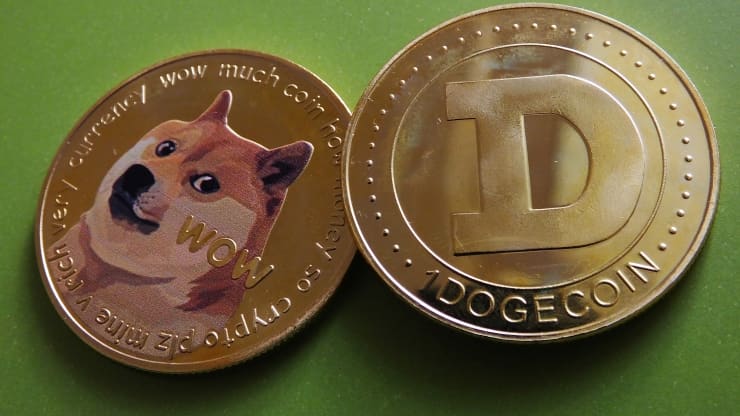When 193 countries came together to sign seventeen sustainable development goals, there was a common recognition of our vulnerability and that of the planet on which we live. While the Sustainable Development Goals of 2030 appear to critics as impractically ambitious, there is one thing that remains certain: we will all be damned for lack of trying. In this piece, I will look at how major players in food distribution and humanitarian aid are using one of our most potent weapons, blockchain technology, to help achieve Sustainable Development Goal two (SDG2): an end to hunger.
The second goal seeks “sustainable solutions to end hunger in all its forms” and to “achieve food security,” in order to ensure everyone everywhere has “enough good-quality food to lead a healthy life.” Achieving this target requires substantive innovations to take hold in both local and international humanitarian efforts. Not surprisingly, the current leader in this field is the United Nations World Food Programme (WFP), the largest humanitarian agency fighting hunger worldwide. The WFP launched their Innovation Accelerator last year, born out of the belief that “old approaches to humanitarian aid must give way to new thinking, bold ideas, and technological innovation.” One innovation that has already proved successful is the implementation of decentralized ledger technology to bring food to communities in need.


Their first pilot project in Pakistan, called “Building Blocks,” is an illuminating example of the blockchain’s usefulness in the fight against hunger. Before rolling out the program, the WFP had significantly increased their use of cash transfers over food donations, finding cash-based assistance to be more practical in improving the livelihoods of recipients. Not only do they allow recipients to choose which food to buy, they also inject much-needed cash into local economies. In exploring new approaches to delivering this cash, they settled on the blockchain. When at-risk families received cash or food assistance, the transactions were authenticated and recorded on the blockchain interface through a smartphone.
The new system benefits both the agency and its recipients, reducing bank fees for both parties while increasing transparency and privacy. The project was so successful that it now operates in Jordan’s largest refugee camp, where the WFP hopes to have at least 500,000 refugees on the blockchain by the first quarter of next year (Opp). Using UNHCR’s biometric identification system, which operates on the blockchain, Syrian refugees in Jordan can buy food from local shops using a scan of their eye, instead of cash, paper vouchers or credit cards (WFP). As a result, WFP now has a record of every transaction occurring at a retailer, and it estimates that up to 3% is being saved on each transaction.
Further, Syrian refugee families have greater security and privacy, as sensitive data does not need to be shared with third parties like banks, phone companies or for mobile money transfers (WFP). The World Food Programme’s targeted and successful application of blockchain in Jordan and Pakistan demonstrate its viability in the world of international humanitarian aid, but beyond that, it provides the first level of a framework for multi-agency use. If other international humanitarian aid organizations accept the innovation, one can envision an entire blockchain ecosystem devoted to humanitarian aid. Doing so would help to diminish the stain of accountability in the industry. According to The Guardian, experts estimate that 1 to 5 percent of a humanitarian organization’s income is lost due to mismanagement or fraud. By placing transfers on the decentralized ledger, the source of these losses could quickly be identified and eliminated. Although the World Food Programme has many obstacles to overcome before blockchain is applied to its utmost, they remain the vanguard in the fight against hunger.


In order to achieve the second sustainable development goal, it is necessary to look beyond relief organizations and the excellent work they do. In the private sector, retail conglomerates are currently developing a blockchain protocol to help prevent food waste. Doing so will help further the second tenet of SDG2, ensuring that everyone “has enough good-quality food to lead a healthy life.” Verifying that food has not been contaminated along its journey from farm to table is an arduous task, one that overwhelms our best efforts. According to the World Health Organization, one-in-10 people fall ill globally and around 420,000 die each year as a result of contaminated food and foodborne disease. The global food supply chain is responsible for guaranteeing our food quality, but this system has become overly complex and fragmented.
Hundreds of actors can contribute to a single food item without knowledge of the other’s actions, making it nearly impossible to trace a contaminated product to its source. With items systematically recorded onto the blockchain and viewable to the entire ecosystem, food providers can identify and eliminate the origin of contamination before it disseminates. This prospect has already gained its foothold with the world’s leading food retailers. Just five months ago, IBM announced a partnership with six companies– Nestle, Walmart, Costco, Golden State Foods, McCormick and Co. and Tyson Foods– and introduced the “first fully integrated, enterprise-ready” blockchain platform to solve the issue of traceability in the global food supply chain. Walmart, which is regarded as having one of the best food traceability systems in the world (Forbes), completed a test using traditional methods to trace the origin of mangoes. It took them six days, 18 hours and 26 minutes to trace the package to its farm of origin. When using the blockchain, the same process took 2.2 seconds. The transparency and efficiency of the blockchain protocol will drastically reduce the amount of food lost or wasted each year, which the FAO estimates are around 1.3 billion tons. Currently, one-third of all food produced is squandered. Let that sink in. Even if just one-fourth of the food currently lost or wasted globally could be saved, it would be enough to feed 870 million hungry people in the world (FOA).
By applying the technology readily available to us it is clear we can advance towards the goal of ending hunger. But this problem is multifarious and it needs to be attacked from every possible angle and avenue. The major players in humanitarian aid and the global food supply chain have already embraced blockchain, which demonstrates their confidence in its viability on a macroscopic scale.
But it’s still not enough.
This article was written by Hannah Liddle, an MLG contributor.
References:
Aitken, Roger. “IBM Forges Blockchain Collaboration With Nestle & Walmart.” Forbes, n.p. 22 Aug 2017. Web. 5 Dec 2017.
Food and Agriculture Organization of the United Nations. “Food Loss and Food Waste.” FAO, n.p. Web. 6 Dec 2017.
Opp, Robert. “Can Blockchain Help to End Hunger?” Dutch Chain, n.p. 30 Sep 2017. Web. 1 Dec 2017.
World Food Programme. “What Is ‘Blockchain’ And How Is It Connected to Fighting Hunger?” World Food Programme Insight, n.p. 15 Nov 2017. Web. 3 Dec. 2017.











